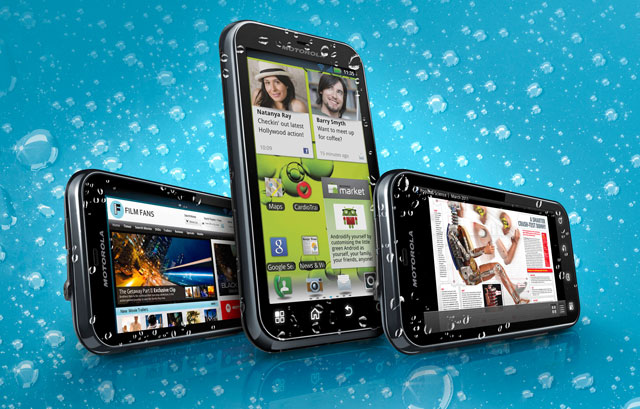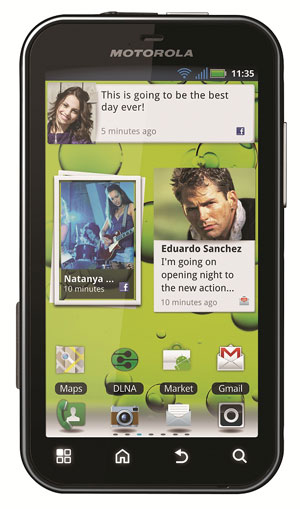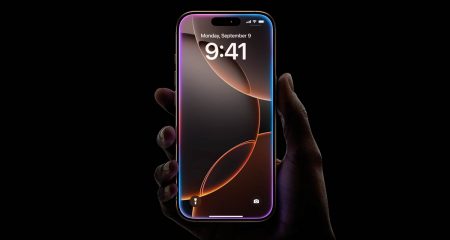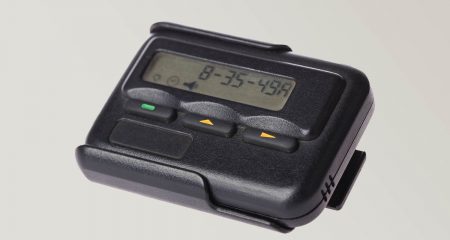
The Motorola Defy+ (officially, the MB526) is in many ways an incremental update to its rugged and unpretentious midrange precursor, but it’s also a reminder that the smartest thing about smartphones is that you don’t need the best features to keep abreast of the rest.
The original Motorola Defy (the MB525) marked the US company’s return to form after a slew of unsuccessful handsets and an accompanying loss of market share and mindshare.
At 13,4mm thick, the Defy+ is a little chunky, but even with the added girth it feels good in the hand and doesn’t weigh down a pocket. Fortunately, priced at a modest R2 899, you don’t need pockets full of cash to pick one up.
The battery is rated at 1 700mAh against the original Defy’s 1 540mAh and, although you’re still not going to get the days of battery we did in the heady days of three-line LCD displays, it means you’ll easily make it through a working day.
 Like its forerunner, one of the differentiating features of the Defy+ is its hardiness. Its Corning Gorilla Glass face and the plastic covers for its 3,5mm audio jack and microUSB port suggest it’s expected to withstand abuse and the odd accidental drop in the bath. According to Motorola, it’s waterproof for up to a metre for 30 minutes — or a normal length bath in a normal-sized tub.
Like its forerunner, one of the differentiating features of the Defy+ is its hardiness. Its Corning Gorilla Glass face and the plastic covers for its 3,5mm audio jack and microUSB port suggest it’s expected to withstand abuse and the odd accidental drop in the bath. According to Motorola, it’s waterproof for up to a metre for 30 minutes — or a normal length bath in a normal-sized tub.
We popped the Defy+ in a basin of fresh water and, as expected, it didn’t seem any the worse for wear. We also dropped it (accidentally) onto a wooden floor and it survived that unscathed, too. Though we don’t recommend abusing even a hardy handset deliberately, it’s good to know the Defy+ can roll with the punches.
The Defy+ runs Android 2.3 “Gingerbread” and, although it won’t be getting an update to “Ice Cream Sandwich”, Gingerbread still offers an excellent user experience and the Defy+ is, after all, positioned as a midrange device.
Motorola overlays its own interface and widgets wrapped up in what it calls Motoblur. Thankfully, it’s one of the less intrusive forms of Android customisation we’ve seen. It’s greatest strength is its unified inbox and feed widget that can pull in information from social networks as well as Exchange e-mail and services such as Picasa, Photobucket, Last.fm and even YouTube.
The Defy+ offers a 1GHz processor compared to the 800MHz of its predecessor, but maintains the same 3,7-inch, 480×854-pixel resolution screen. Though there are a number of higher-end handsets with larger screens, the Defy+ feels good in the hand and the on-screen keyboard is extremely responsive and offers the popular “Swype” input method that allows you to type by drawing a line over the letters of a word fluidly, rather than tapping them individually.
Aside from the responsiveness of the display, input is also aided by haptic feedback, meaning social media fiends will be well served. Being a midrange handset, the camera is a fairly pedestrian 5-megapixel affair with an LED flash that also supports video recording at 30 frames per second at 640×480-pixel resolution. That’s more than sufficient for most people’s requirements.
Like most Android devices, the Defy+ supports microSD cards up to 32GB and comes with a 2GB card supplied. With 2GB of internal memory, users shouldn’t have to worry about running out of space for applications.
Aside from the upgraded innards, the Defy+ is indistinguishable from the first-generation Defy, complete with the unfortunate decision to let the waterproofing covers protrude a little from the edges. In use, though, the Defy+ is an entirely new beast, one that promises great functionality and durability from an incredibly affordable device. — (c) 2012 NewsCentral Media




